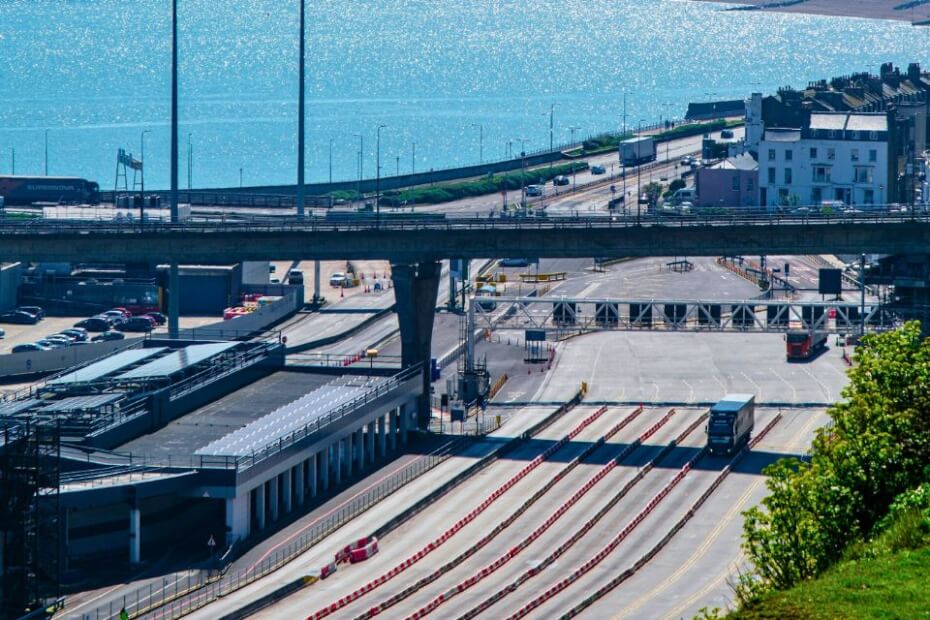
An official of a ferry company has suggested delaying the implementation of the European Union’s (EU’s) new Entry/Exit System (EES).
Jack Steer, P&O Ferries director of ports operations, said the EU should postpone the EES rollout again to avoid delays at United Kingdom (UK) ports, reported the BBC.
Speaking to the UK Parliament’s European Scrutiny Committee on 6 March, Steer said, “I genuinely believe that October 2024 is too early.”
The EES was first proposed in 2008 and initially slated for a 2021 rollout. The EU will implement the much-delayed EES scheme in October 2024.
With the EU’s new automated border systems, non-EU travelers must register fingerprints, facial scans, and passport details at the border.
Travelers must do this in front of a border control officer the first time they enter the EU’s Schengen Zone.
“We all need to be talking about whether October is really the right time for us to go live with a product that is still evolving,” Steer insisted.
In the meeting’s transcript, the ferry director stressed that port and ferry operators, the UK and French governments, and the wider community need more time.
Steer commented that the EES is more suitable for airports than ports where it could be raining or windy.
An app to help speed up EES biometric registration
Steer proposed using “an app or another technological solution to do the tests” passengers must go through outside the port.
With an app, ferry passengers could register “in their own time,” similar to how travelers apply for their passports.
Steer had pictured travelers at ferry ports passing around a tablet to fill in their details. However, this would still consistently “layer on” time for border officials to check.
Jesper Christensen, operations director on the Channel for shipping company DFDS, also cautioned that there might be insufficient border force guards during peak times.
If an app could be developed, “we would definitely want to have it ready for next year’s Easter and summer if we are to manage those peaks,” Christensen shared.
Nichola Mallon, leader of trade and devolved policy at Logistics UK, shared the same view on needing a digital solution.
An app “takes the burden of registration away from the physical border,” Mallon said.
She added, “That will help to ensure the smooth flow of passenger and freight traffic.”
Mallon also disclosed to the committee that the EU is developing an EES app.
However, the app is still in development and will not be ready by October, but most likely by the summer of 2025.
The EU government must also amend its laws to allow biometric registration through an app or digital solution for EES implementation.
Previous calls for EES registration ahead of time
Like the Port of Dover, train passengers would need more space to queue and record fingerprints at London’s St. Pancras Station’s juxtaposed borders.
Juxtaposed border controls mean French border police check passports as people leave the UK.
High Speed 1 (HS1) and Eurostar had previously insisted that travelers register biometric data off the border and ahead of travel.
HS1 owns and operates the line and stations between London and the Channel Tunnel.
Eurostar is the international high-speed rail service connecting Belgium, France, Germany, the Netherlands, and the United Kingdom.
The railway companies stressed biometric registration upon arrival at the border would significantly impact train stations’ limited spaces.
HSI had also called for a gradual implementation of the EES to prevent any “serious disruption” in UK-EU train travel.
It said the station needs more EES kiosks to process biometric registration and checks more efficiently.
Eurostar may also be forced to limit its passengers to avoid long queues at the border.
Eurostar has proposed an “emergency brake” option for government officials if the EES leads to longer queues.
Other evidence indicates EES will disrupt UK-EU travel
The European Scrutiny Committee has been gathering evidence on how the EES would impact travel between the EU and the UK.
The Port of Dover and ferry companies have previously warned of 14-hour delays at the border.
At the Port of Dover, with juxtaposed borders, there is not enough space for passengers to disembark from their vehicles and register for the EES.
Local officials have also shown how long queues at the border can seriously impact local communities, businesses, and authorities.
Significant delays at the port may result in traffic congestion on main roads, impacting access to the Eurotunnel in Folkestone.
This may disrupt local economies and raise welfare concerns for passengers and communities.
London Mayor Sadiq Khan and local officials at Kent had urged the UK government to address the upcoming EES border issues.
The UK Parliament’s Justice and Home Office Committee also launched an inquiry into electronic border management systems.
This includes the EES, the European Travel Information and Authorization System (ETIAS), and the UK’s Electronic Travel Authorization (ETA) system.
How the EU’s Entry/Exit System works
The EES is designed to boost border security for the EU’s Schengen Zone.
Instead of stamping passports at the border, the EES will electronically track entries and exits.
The EES will also note entry refusals and identify unauthorized individuals and those who have overstayed in the Schengen Area.
The new digital border check system will also spot individuals using fake identities and passports.
Biometric registration before a border officer is required only for the first time they enter the EU’s Schengen Zone.
For future visits, travelers can use fingerprints or facial biometrics to confirm their permission.
Their data will stay in the EES for a maximum of three years or until their passport expires.
Each time they visit the Schengen Zone, the EES will refresh and keep the data for another three years or until their passports expire.
If they visit the Schengen Zone after the three years have expired, a traveler must again register their biometric data before a border officer.

